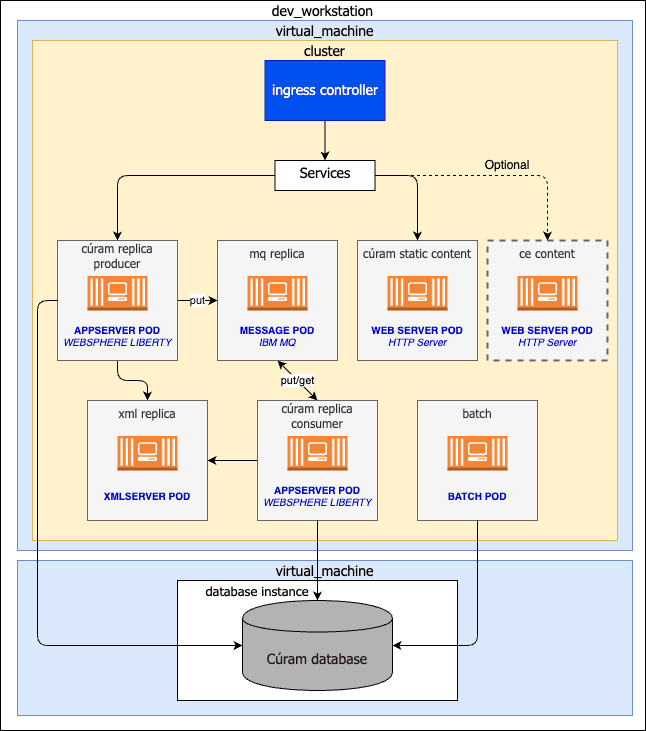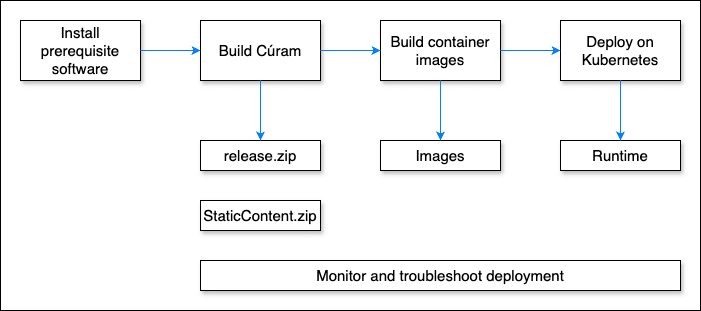Dev Workstation
This runbook is intended for first-time users of Helm, Minikube, and Kubernetes who want to deploy Cúram in a local development environment.
Minikube is a lightweight Kubernetes implementation that runs a single-node cluster inside a virtual machine (VM) on your laptop. This setup provides a minimal architecture to help you become familiar with the main artifacts needed to run Cúram on Kubernetes.
Development Workstation Architecture
Figure 1 shows the example architecture:

*Figure 1:* Example dev workstation architecture
The architecture consists of a Kubernetes environment (within a VM) containing the following components:
- An IBM® WebSphere® Liberty-based pod that contains the Cúram EAR file.
- A pod with an IBM MQ Server configured as the message engine to support JMS-based deferred processing in Cúram.
- A pod that contains the XML server.
- A pod that runs batch processes.
This environment connects to an external IBM Db2 or Oracle database.
For a Kubernetes cluster in a development environment this runbook uses Minikube. Minikube can easily run on a developer computer, which is convenient for describing the application flow. CodeReady Containers (CRC) can also be used to run a Kubernetes environment in a development environment.
Development Workflow
Figure 2 outlines the development workflow:
- Create a build and deployment environment for Cúram.
- Build Cúram for deployment on Kubernetes using Minikube or CRC.
- Create Docker® images for Cúram.
- Deploy Cúram Docker images to Kubernetes on Minikube or CRC.
- Troubleshoot Cúram when deployed in Kubernetes.

*Figure 2:* Process summary
The runbook makes the following assumptions:
- Steps to build the Cúram containers and run Minikube or CRC are performed on a Red Hat or macOS development machine.
- Steps related to Building the Cúram application can be executed on a separate machine.
- You have basic knowledge of the Linux command line for navigating folders.